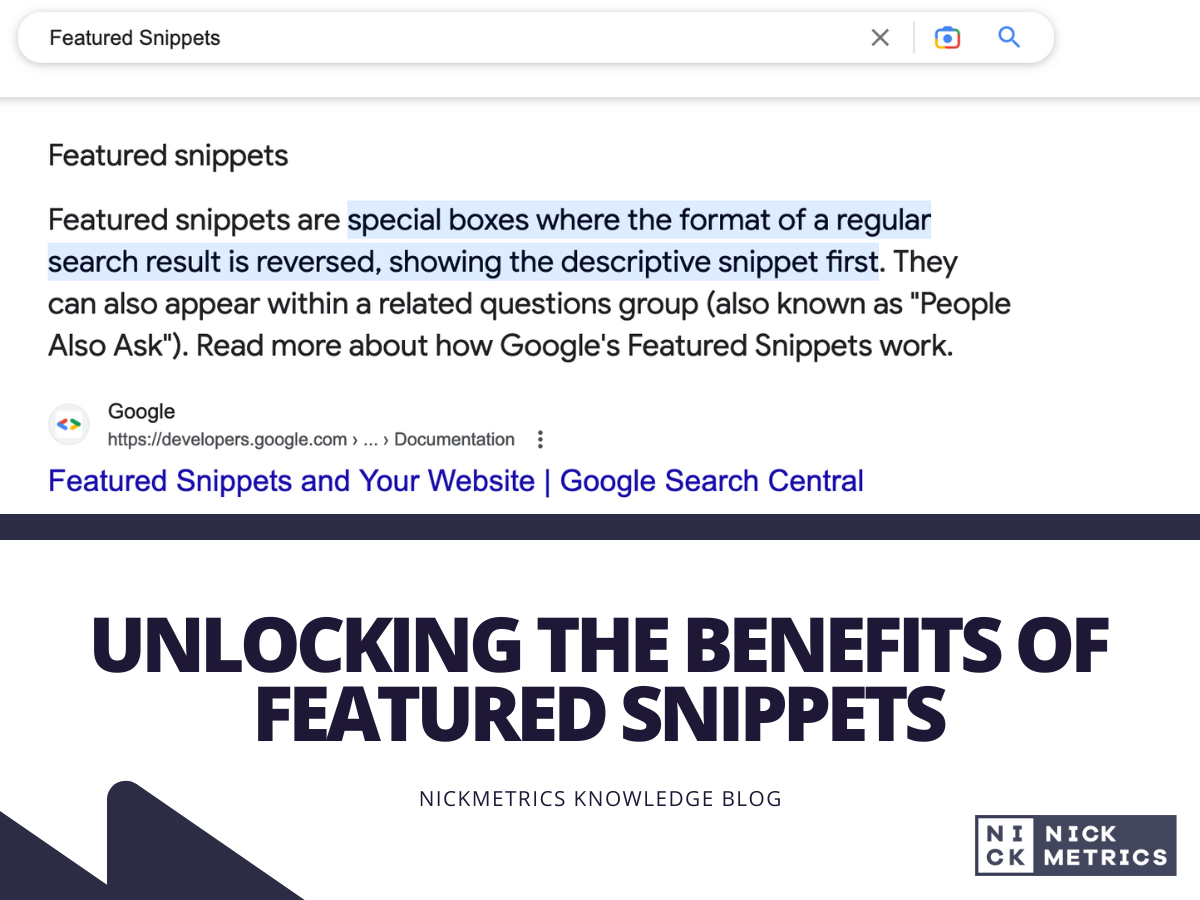
ENTER YOUR EMAIL ADDRESS
Follow Us

To results on Google aren’t what they used to be. Ok, we don’t mean that they’re worse in any way. They’re more helpful. But they do look different. They aren’t only links; you can see questions and answers, graphs, and other types of information. That is all part of Google’s attempt to give users what they’re looking for as quickly as possible without making them click through to a website. And this is where featured snippets come in. The best thing about featured snippets? Not only are Google’s snippets helpful for users, but they can also help your website’s SEO. In this post, we’ll give you everything you need about featured snippets and how you can use them to improve your ranking.
When you type in a question, it is a box at the top. It’s Google’s way of answering your question without making you click through to a website. When you type in a question, Google looks for the best answer and displays it in the featured snippet box. The answer comes from a website already ranking in the search results. Here’s an example of a featured snippet:
As you can see, the featured snippet gives you a quick answer to your question. And, if you want more information, you can click on the website that the answer came from. Featured snippets can appear in different formats. Google will try to answer your question using a fixed form it thinks is most helpful. For example, if you type in a question with a list as an answer, Google will likely display a numbered list in the featured snippet.
Featured snippets are helpful for two reasons:
They Can Help You Rank High In SERPs
Since these are at the top of the search results and above the first organic result, if your website ranks in the featured snippet spot, you can rank twice for the same query. Of course, appearing in the featured snippet doesn’t guarantee you’ll rank first. But it does give you a good chance of ranking high in the search results.
They Can Increase Your Website Traffic
Google featured snippets can also help you create traffic for your website. So even if you’re not ranking first, appearing in the featured snippet can still help you get clicks. Research has shown that featured snippets get clicked on more than organic results. For example, in one study, featured snippets got 8.6% of clicks, while organic results only got 5.6% of clicks.
How To Use Featured Snippets
Now that you’re aware of featured snippets and know how they can help your SEO, you’re undoubtedly wondering how to get your website to appear in them. Here are a few tips:
Answer Multiple Questions
One of the best ways to appear in featured snippets is to answer multiple questions. Google is more likely to choose a website that answers many different questions rather than a website that only has a solution to one specific question.
Keep Things Short
When writing your content, keep things short and to the point. Google prefers featured snippets to be around 50-60 words. So, if you can answer a question in that range, you’re more likely to appear in the featured snippet box.
Use Headers When Writing
Using headers makes it easier for Google’s algorithm to find the answer to your question. That’s because headings help Google understand the structure of your content.
Have a “How To” Section
Google often displays featured snippets for “how to” questions. So, if you have a website with step-by-step guides, you’re more likely to appear in the featured snippet box.
Use Google Questions for FAQs
Google also pulls featured snippets from websites with FAQ sections. So, if you have an FAQ section on every post on your website, use Google’s questions format. To do this, just put each question in its H2 tag and follow it with the answer.
Featured snippets can improve your SEO and help get more traffic to your website. To increase your content’s chances of appearing as a featured snippet, answer multiple questions, keep things short, and use headers when writing. You should also have a “how to” section on your website and use Google’s questions format for FAQs.
Tags: Featured snippets, Google Algorithms, Search Engine Optimization, SERP